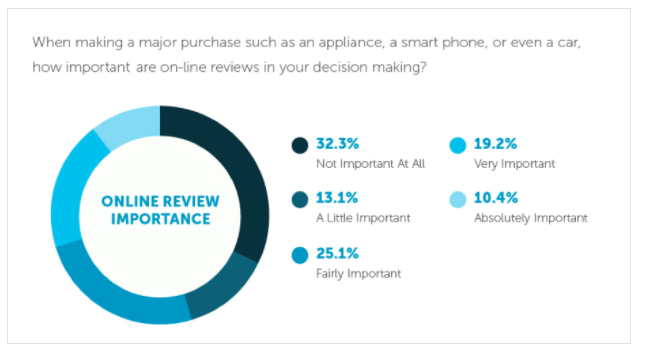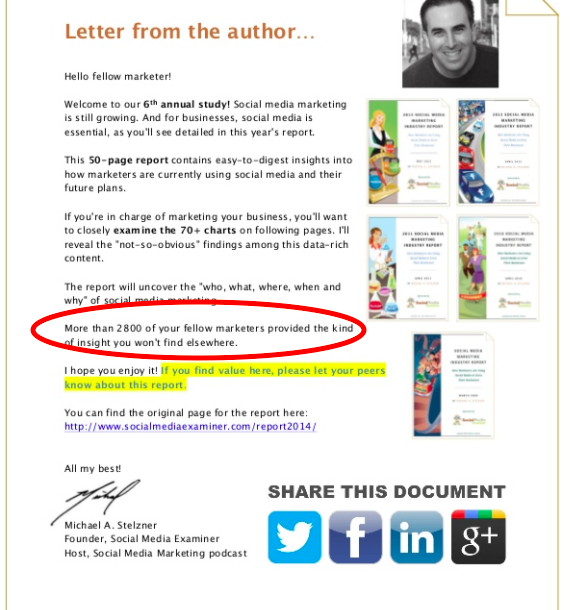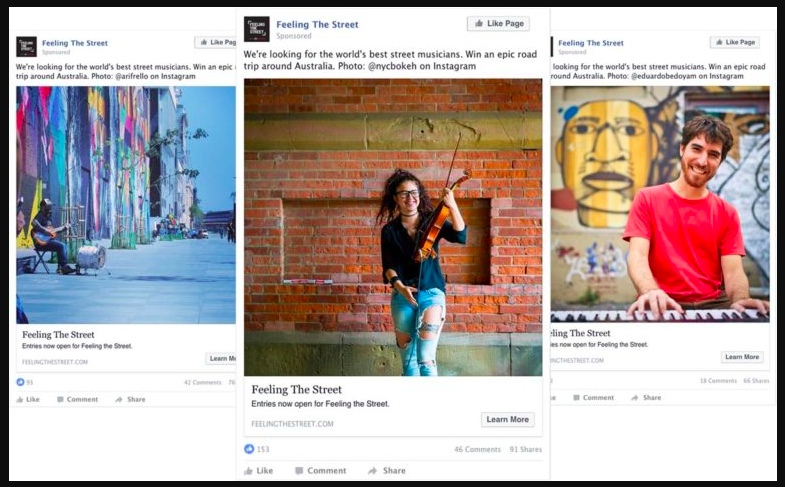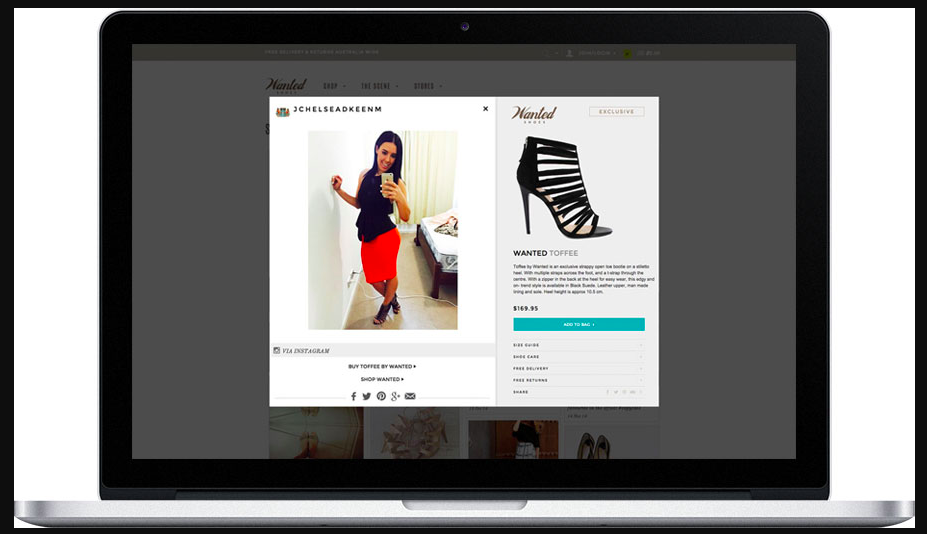I’ll let you in a little secret – your users are a goldmine when it comes to content.
Every day, they’re providing it through reviews, comments, photos, and more.
Your job? Find out how to use it. In this article, I’ll show you how.

Why Use User-Generated Content?
Because frankly, a fellow customers word might mean more than yours.
Think about it like this: If you’re picking a hotel to stay in, do you trust their website content or their Yelp reviews more?
Probably Yelp reviews.
Why? Because they’re honest, they’re unsolicited, and (usually) unbiased.
Images, videos, and reviews that come from previous customers are therefore seen as more reliable than branded content from marketers.
In fact:
- 92% of customers trust UGC on websites over deliberate marketing advertisements.
- 46% of people trust online reviews posted by other customers.
- Brands see 25% increase in conversions when user-generated photos are used instead of professionally clicked product shots.
- Online stores experience 4x higher click-through rates when user-generated content is included in advertising.
- 82% of shoppers believe UGC content to be a crucial deciding factor for making a purchase.
Beyond the overall credibility it will bring to your brand, improve time spent on website, and foster better relationships with customers.
And did I mention it was free?
One last thing…UGC doesn’t just look good to other customers. It looks good to Google.
Use Reviews to Boost Search Rankings
One of the most common kinds of user-generated content comes in the form of reviews.
Sites like Yelp and Trip Advisor thrive because of them. Not only do they act as a form of social proof (adding that extra layer of reliability to potential customers), but they can do wonders for your rankings in the SERPs.
I hardly need to explain the importance of a high ranking. These days, people want answers, fast, and are rarely willing to look past the first page of Google to find them.
Our job as marketers is, of course, to find a way to break onto that first page – and make our way all to the top.
One way to do that is to collect more quality reviews, which can affect your rankings in a number of ways.
First, there’s a direct correlation between the number of fresh reviews and how well a site ranks. In fact, stats show that 25% of search results for the world’s top 20 brands are links to user-generated content.
That’s due largely to the fact that search engines count incoming reviews as fresh content, and will index it accordingly. The more fresh content your site has, the more has to Google has to work with in the rankings.
Reviews, and a presence on review sites, also helps sites build a lot more backlinks, which is another major factor in successful SEO.
And if you’re a local business, those reviews are especially important. Because Google has integrated reviews into the Google+ Local initiative, these reviews are often placed near the top of search results for businesses.
While Google’s algorithm is a well-kept secret, Moz Local Search Bar reports that review signals make up an estimated 7%-13% of how Google decides to rank local pages.
Register on Review Sites
While you may usually think of hotels and restaurants when you think of major review sites, it may be time to think again.
Many companies have a presence or page dedicated them on various review sites, so ensuring you have a strong, quality store of reviews will do you good in the long run.
For example, if I type “Ignite Visibility” into Google, both Glassdoor and Clutch (two review sites) appear on the first page of Google.

User-Generated Content: Importance of Online Reviews
This also means it’s possible you may have a presence on some review sites you haven’t claimed. While the sites that matter most will vary depending on your industry, a few big ones to be aware of are:
- Amazon – If you use Amazon to sell your products, collecting positive reviews and as many gold stars as possible will help you stand apart from the crowd, and helps you rank higher in customer searches
- Google My Business – These pop up on the right side of the search results, and are extremely important for local businesses. Google’s Pigeon algorithm update uses location and distance ranking criteria to improve local search results. Local businesses should make sure they’ve claimed their local listing and fully optimized it. The more reviews, images, etc. you collect, the higher your listing will rank
- Yahoo Local Listings – Similar to Google My Business
- Yelp – We’ve touched on this one, and it’s clearly one of the bigger names in the review site business. A company’s Yelp page often appears towards the top of the search results
- Facebook ratings and reviews – Good reviews collected via social media will also increase integrity and credibility with fans and followers
User-Generated Content: Use Review Schema for an Added Boost in the SERPs
Review schema is a type of rich result that allows businesses to show star ratings in the Google SERPs.
You’ve likely come across these multiple times in your own Google searches. And once again, these ratings help signal that a company is legitimate and trustworthy.
But how did those ratings get there? Through schema markup.
Simply put, schema is structured data that gives Google more information about your site. To use it, you have to add the schema to your page (read about the process here).
Focus on Blog Comments for Better Rankings
Comments are another form of UGC that can have a big impact on how well your content ranks.
Why? Because to Google, comments look like part of your post. Which means the number of high-quality comments your post receives will have an impact on where your content ranks.
To be clear, when I say high-quality, I don’t mean comments like “nice post” or “thanks.”
Instead, you have to look at them like you would any other piece of original content. When you sit down to write a post, you have to consider whether the content is relevant to your audience.
The same goes for reviews.
You want reviews that are well thought out and thorough. Not only do these look better in terms of content, but they’ll often include long-tail keywords variations that your site can rank for.
Of course, high-quality comments are hard to come by. Some ways to encourage people to comment are:
- Ask questions through calls-to-action (CTAs) – For more comments, always ask your readers to engage by asking for their thoughts, opinion, experiences with certain products, etc.
- Respond to comments – responding quickly to comments will help your audience feel like part of the conversation, and likely lead to more in the future. Bonus tip: address each commenter by name to increase personalization
- Comment on other blogs – this one will help get more traffic to your own blog by proving that you’re an active part of your niche, and help establish you as a thought leader worth following (if you’re leaving high-quality comments). It’s also a good opportunity to link back to your blog
Use User-Generated Content to Increase Engagement
Content creation is absolutely key to successful audience engagement. But creating that content is a common roadblock for marketers.
So why not get your users to do it for you?
Using UGC in this way is a great way to foster engagement while gaining unique insights into your audience.
You’ll commonly see this done through social media contests and surveys. Take this example from Human Foosball’s Instagram:

User-Generated Content: Hold Contests
It gets users involved and encourages them to do so through a relevant prize.
Or, use surveys to fuel your content, like Social Media Examiner.

User-Generated Content: Run Surveys
They survey their readers to find out the topics and insights most relevant to them and uses that information in their annual report.
This is beneficial in multiple ways. First, it will drive more engagement from users who trust their peers’ opinions. Next, it will give you valuable insight into your audience and what’s important to them, which will better inform your content strategy going forward.
Another way to involve your users is by featuring contributor blog posts. Just like any of your original posts, it can help your ranking if it’s high-quality.
Beyond that, it will appeal to your audience by offering a fellow user’s take or opinion.
Use User-Generated Content in Social Ads
One way to avoid looking spammy in your ads? Use UGC.
Facebook still reigns supreme when it comes to social (in part due to their powerful advertising and targeting abilities), and the platform recently reported that UGC drives 6.9x higher engagement than brand-generated content on their platform.
Toyota used this information brilliantly in their “Feel the Street” campaign.

Use User-Generated Content in Social Ads for More Engagement
Here’s how it worked:
For six weeks, street musicians were asked to enter clips of their own original performances; then, visitors to the site could vote on their favorites until eventually the top six were picked.
The campaign drove engagement all over the place – not only were the entries submitted from users, but fellow users were then responsible for choosing the winners.
Toyota’s goal was to increase ad engagement by 300%, without increasing overall ad spend.
The results more than exceeded expectations. The six week campaign achieved over 1.2 million engagements (likes, comments, shares) against a target of 800,000 – a 440% increase in total engagement from the previous years’ campaign.
The Toyota team was deliberate in their strategy, knowing full well the impact UGC can have: “We knew authenticity was the key. Slick product photography and cheesy montage videos weren’t going to resonate with our core audience of 18-24 year olds. Instead we put a focus on authentic user-generated content, using it to power our social display advertising.”
So next time you think user-generated content isn’t effective, think again.
Use User-Generated Content Throughout Your Website
Another way to incorporate UGC is right on your website.
For example, you’ve probably visited a website that included a social media feed in the sidebar. It can be powered by a social profile from Twitter, Facebook, or Instagram, or by a specific hashtag.
The reason these feeds are created is that they lend credibility to pages through social proof. If you enable comments from social sites on your websites, you can show up-to-date user interactions. Sometimes, just displaying the number of likes your social page has can be enough to prove your credibility.
Keep in mind, you only want to display full feeds if you are actively involved with your social site. Before doing so, make sure you have a clear social strategy and are receiving interaction from your fans and followers.
You can also be very strategic about where you place UGC on your site. And if you do it right, you can even use it to boost sales.
Let’s look at online shopping. Though convenient, one of the biggest barriers is that customers can’t actually see the product they want to buy in real life. This is exactly where trusted user-generated content can come in handy, acting as social proof and providing validation.
Footwear retailer Wanted Shoes used its strong social presence to its advantage. To give visitors a unique way to shop for their products, they integrated social content from Twitter, Facebook and Instagram into their product pages.
When a customer clicked on a specific, they would then be shown the professional product photo along with real customer photos of the product.

Use User-Generated Content Throughout Your Website
By giving customers a glimpse of the real deal, Wanted Shoes was able to increase conversions by 30%.
Good news is, you can do it too.
UGC-centric platforms like Stackla are designed to help you consolidate and integrate your user-generated content from around the web. Using it, you can do things like embed social widgets (like Wanted Shoes did), power competitions, or display a live stream of social media posts, aggregated via hashtags (like Wanted Shoes did).
Wrapping Up User-Generated Content
User-generated content is an effective way to boost your trust and credibility with your customers as well as your rankings in the search engines.
Leveraging it in a way that makes the most sense for your business can have a dramatic effect on your goals. So if UGC isn’t already part of your content strategy, consider how you can use it today.